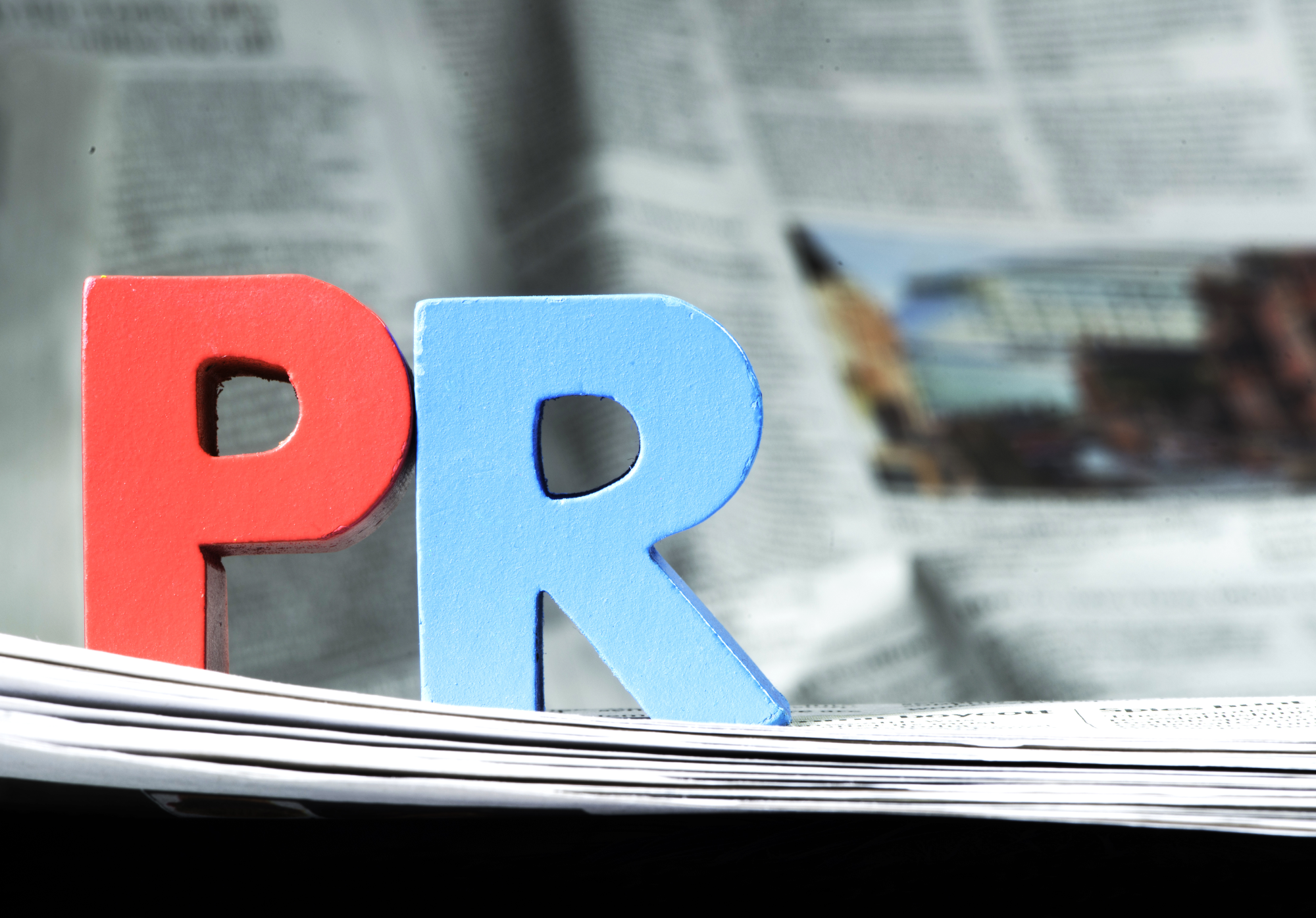
Digital PR plays a much bigger role in demonstrating E-E-A-T (Experience, Expertise, Authoritativeness & Trustworthiness) than you probably think.
In fact, I’d argue that it’s an essential part of building the reputation of both your subject matter experts (your authors) and your brand.
But as much as digital PR has the potential to help you earn the third-party validation you now so badly need for long-term organic search success, it’s also not too difficult to find yourself missing out on opportunities to build incredibly strong E-E-A-T signals.
To put it simply, it’s so important that you understand digital PR’s role in demonstrating E-E-A-T and that you’re able to use it to your advantage, knowing the levers you can pull and how to maximise the impact and effectiveness.
And in this guide, I’m going to take a deep dive into digital PR’s role in E-E-A-T and how you can use it to make sure yours is one of the sites that thrives during future algorithm updates.
You’ll gain an insight into the digital PR tactics that align perfectly with demonstrating E-E-A-T, including a look at how you can execute these and lots of examples of how Digitaloft’s own digital PR team have launched successful strategies with the goal of building brands and establishing subject matter experts.
Introducing the Three Levels of E-E-A-T
Before I walk you through how digital PR can be used to demonstrate E-E-A-T, I want to introduce you to the concept of breaking this down into three different levels:
- E-E-A-T at the content level
- E-E-A-T at the author level
- E-E-A-T at the brand level
You can read about this in more depth in our guide to breaking E-E-A-T down to the content, author and brand levels, but an overview of this is that you need to think beyond E-E-A-T being a general sitewide signal or series of signals. You need to think about the ways you can effectively demonstrate signals at each of these levels.
Content-level E-E-A-T is all about demonstrating strong signals for each webpage and piece of content you publish. It’s things like making sure you’re attributing content to your subject matter experts (not ‘admin’), that you’re linking to an author’s profile page and using webPage schema to help Google understand who the author is, as well as ensuring your content uses verifiable claims that are backed up by sources, adds value beyond what’s already ranking at the top of the SERPs and includes unique insights from your people.
Author-level E-E-A-T is all about building and showcasing the reputation of your authors, both on-site and off-site. It’s things like having in-depth author profile pages, using Person schema to give away as much information as possible about the author and show connections to their social profiles and other platforms, using these experts as spokespeople to land press coverage and that the author has published multiple pieces of content around the wider topic.
Brand-level E-E-A-T is all about building and showcasing the reputation of your brand, both on-site and off-site. It’s things like having a physical business address on the site (not a virtual address or mailbox), having easy-to-find contact information, standard business policies you’d expect to see on a site (privacy, cookie, returns etc), a detailed ‘about us’ page, regular press coverage, positive reviews and testimonials, as well as some degree of brand searches.
Whilst there’s a lot more to demonstrating E-E-A-T than digital PR, it’s important to understand the concept of breaking it down into these three levels.
Each requires its own approach, and digital PR can demonstrate strong signals at each of these, in different ways.
Why Digital PR for Building E-E-A-T Signals?
Before we look at specific digital PR tactics that can be effective ways to build E-E-A-T signals, let’s consider why it’s something that, as far as I’m concerned, is an essential part of any strategy.
Here’s what I consider to be the main benefits of digital PR as part of building and demonstrating E-E-A-T:
It increases brand awareness
There’s no hiding from the fact that Google has rewarded brands for a long time now, and it’s increasingly the case during algorithm updates that those who have invested in brand-building tactics typically fare better than those who haven’t.
And one of the main benefits of digital PR is, of course, its ability to increase brand awareness; to get people talking about you, to get your brand associated with your key topics of expertise and, alongside this, generating social engagement and awareness.
When we consider that E-E-A-T is very much based upon third-party validation of your reputation (off-site factors), it’s easy to see how digital PR feeds into this nicely, especially at the brand level.
It establishes your people as subject matter experts
Building and demonstrating the reputation of your authors is ultimately what author-level E-E-A-T is all about, and digital PR is perhaps the most effective way to achieve the off-site part of this.
Press coverage for your people, particularly when that’s using their comments and insights to add value to stories, helps to establish them as subject matter experts, and validate their experience and expertise through third-party sources.
Of course, digital PR is effective at building both your brand and experts’ reputation, and there are tactics that can achieve both at the same time. Keep reading to learn what these are.
It drives brand searches
One of the simplest ways for Google to determine brand popularity is through brand searches; people searching specifically for your brand on the search engines.
And whilst there’s nothing to suggest explicitly that Google uses brand searches as a ranking factor, this is something that SEOs have been speculating about for a long time. Especially if that’s people search ‘[brand] + [keyword].’
When you think about it, it makes total sense. What better way for Google to understand the queries you’re most relevant for than people searching specifically for your brand alongside one or more keywords?
And brand searches are something that digital PR has the ability to influence. Both directly, and indirectly.
Digital PR can directly drive brand searches when someone sees your brand mentioned in the press and goes away and searches for you.
Indirectly, digital PR can drive brand searches when someone clicks through to your site and later goes and runs a branded search to return to your site.
It can give you a higher-than-average organic CTR on the SERPs
One thing that’s often not considered is that digital PR can contribute to your site having a higher-than-average on the SERPs.
This is a concept that’s described in detail by AJ Kohn (Shoutout to Lily Ray for sharing this on Twitter whilst I was putting together this guide), and one that we need to be thinking about more as marketers.
You see, when searchers are familiar with a brand, they’re more likely to click on that result when they see it on the SERPs. Even if that’s maybe ranked in, let’s say, position 3 rather than position 1. Why? Because they’re gravitating towards a brand they’re familiar with and, therefore, trust more than one they’re not.
In turn, a higher-than-average click-through rate for your site can result in it ranking higher than a site which previously ranked above you but received a lower-than-average CTR.
And what’s one of the most effective ways to increase familiarity with your brand?
Digital PR.
It associates your brand with authoritative sources
When your brand is associated with authoritative sources, such as top-tier and niche-specific media publications, this is only ever a good thing (assuming this association is a positive one).
Digital PR is a great way to get key media titles talking about your brand and your products or services, associating you with their authority.
And, in many ways, this comes down to the basics of PR. When publications with a significant reach (either in the mainstream or in the context of a specific niche) are talking about you, it’s hard for readers to ignore you.
Whether or not we’re talking specifically about the SEO impact, getting in front of your target audience via trusted publications goes a long way to establishing you as a key player in your industry.
It gets your content linked to cited as a source by other sites
Links remain one of the three pillars of SEO success, and they remain a key component of demonstrating high E-E-A-T.
Going right back to the basics of links (and, in particular, PageRank), we must remember that these are essentially votes of trust between one site and another.
When one site links to another, it suggests that it’s happy to send its visitors to the target page. Links remain an incredibly important ranking factor, even if these are no longer in the top three.
Digital PR is perhaps the most effective tactic that you can use to earn links from authoritative publications, whether that’s your content being cited (and linked to) as a source, your authors’ profile pages being linked to or your homepage.
When other (especially high-profile) sites are citing you as a source, it’s hard for Google not to take notice of this…
Making Digital PR Work Harder to Demonstrate E-E-A-T
As much as digital PR plays a key role in demonstrating E-E-A-T, there are things that you need to consider and implement to make sure the coverage you earn is having the biggest possible impact.
Here are the things you need to be paying attention to and the commonly made mistakes you need to avoid.
Think about it as more than just a link building tactic
Digital PR isn’t just a link building tactic.
And in order for you to truly see the maximum impact from your efforts, you need to stop thinking about it in this way.
Of course, digital PR can earn better links than pretty much any other tactic, but it’s about so much more than just links.
You see, when your only goal from digital PR is links, you go into ideation and pitching to the press with this at the forefront of your approach. This often results in narrowminded execution.
If all you’re focusing on is links, this naturally steers you towards the mindset that other outcomes from your efforts don’t hold as much weight. And this can lead to missed opportunities.
Take, for example, when our campaign, The Cosmetify Index, was shared by Stranger Things’ Millie Bobby Brown to her 63.5 million Instagram followers:

Or when the same campaign was shared by Huda Beauty to almost 54 million followers:
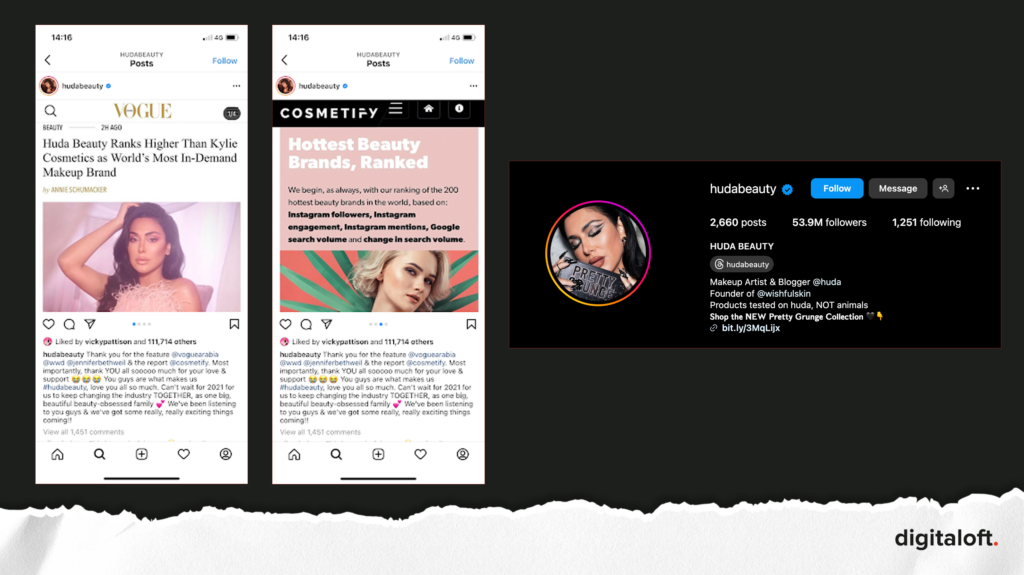
These two Instagram features weren’t links, but they got our client in front of a combined following of 117 million.
Right back round to brand building and trust signals.
When you consider that digital PR is about so much more than links, you’ll quickly realise that it also has the potential to:
- Increase brand awareness
- Drive referral traffic
- Earn social engagement
Don’t limit your creativity or ability to have a wider impact on demonstrating E-E-A-T by thinking too narrowly.
Digital PR is about so much more than links, but there’s no denying their importance, and given the opportunity, you’d always want a link over a brand mention.
Relevancy should be your most important KPI
There continues to be a debate about how relevant digital PR activity should be to a brand, especially in terms of how many degrees removed you can get from a brand’s core topic of expertise without losing relevancy.
But in my opinion, relevance should be your most important KPI for digital PR activity. Certainly above a KPI based on link or coverage numbers alone.
You see, relevant coverage and links build your reputation at both brand and author levels within your topic area of expertise. And this is what demonstrates stronger E-E-A-T signals.
At the end of the day, it does nothing for your reputation if your brand or people are commenting on totally irrelevant topics.
In my eyes, as an experienced SEO, the last few years have seen a real shift in the need for us all to focus on the relevancy of links and coverage above anything else.
Yes, most of us who have been doing digital PR for a while have all earned links and coverage that aren’t really that relevant, when we look back. But at the time, these tactics worked; loosely relevant links would still contribute to growth.
And that’s fine. Tactics shift, and we have a duty to keep evolving our tactics in line with what’s working today, and what we think will work tomorrow.
But right now, relevancy is the biggest lever you can pull to make sure your digital PR activity is impacting your wider organic performance.
Just a handful of really relevant links and pieces of press coverage are going to have a bigger impact than hundreds of ones that aren’t relevant at all.
The time has come to reconsider how we, as an industry, define digital PR success. Do link numbers really matter that much if some or all of the links aren’t relevant? In my opinion, not at all.
A better measure of success is the relevancy of the links and coverage that’s earned. And let’s also acknowledge that this shouldn’t just be linked coverage. Yes, all coverage would link in an ideal world. But the reality is that this doesn’t always happen, and relevant coverage still has the ability to positively impact your brand and organic performance.
In fact, unlinked coverage is more likely to result in an immediate brand search 👀.
And that’s not to say links aren’t important. They are. But the reality for most brands is that mentions are still valuable, you just need to see their impact in a different way. Whilst mentions aren’t a direct ranking factor in the same way as links are, they’re absolutely an E-E-A-T signal.
Use subject matter experts as your spokespeople
You need to make sure you’re aligning your on-page and off-page efforts in order to demonstrate E-E-A-T at the very highest level.
And one of the most effective ways to do this is to make sure you’re using your brand’s subject matter experts as spokespeople in your digital PR activity.
In fact, one of the most common mistakes that I see brands making is using either a generic ‘a spokesperson from [brand] comments…’ or their marketing manager as the name alongside comments in the press. And this is doing nothing to build the profiles and reputations of the right people.
Proudly put the best people in the business behind your comments and thought leadership work.
Make sure the people who are giving comments and sharing insights in the press are the same experts who are authoring your content on the site.
Think about it as connecting the dots.
I wanted to understand how important this is to journalists, and how valuable using subject matter experts for your comments is.
I reached out to a current and former journalist to ask their take on this…
Most of the time it depends on the type of story, with more specialist stories requiring specialist spokespeople. For example, for an expert piece about finance, a marketing manager wouldn’t cut it – you want an actual financial expert to give that professional insight and advice that carries real authority in the sector.
Whereas, if it was a light and fluffy story – about a social trend or pop culture (including showbiz news), etc. – the expertise of the spokesperson is less important and acts to add colour to the article rather than contributing expert insight.
However, I would say that marketing-related titles can also make the piece feel advertorial, which news outlets typically want to avoid, so other relevant titles would be more suitable. For example, a ’sleep expert’ for a mattress brand, rather than a ‘marketing manager for XX brand’.When it comes to expert comments and insight, the more niche the spokesperson’s job title, the better and the more weight it carries.
For example, an article about mortgages would benefit best from a mortgages specialist rather than a general financial expert.Rebecca Cooley, Former Journalist & Current Digital PR Strategist at Digitaloft
Genuinely specialist spokespeople (as opposed to marketing professionals or general spokespeople) will also be also to provide more in-depth detail that drives the authority and value of the contribution beyond what anyone could Google and draft up themselves, making journalists more likely to feature the comment.
Personally, I don’t feel the role matters as much as whether they’re a known expert in their field. So, if you’re known for having opinions on the latest tech, I’m far more inclined to trust your opinion on a tech-related story, for instance.
The last thing we want is to run quotes from people who sound like they know what they’re on about but are actually pretty far removed from how their company works.
A marketing manager is definitely less of a thought leader on something because they’re a mouthpiece for that company, right?
So, I write mostly about movies – I hate getting releases where it’s just lots of quotes from execs and marketing managers.
It’s just stuff they want to get out for branding. I personally take marketing managers or spokespersons with a pinch of salt and would much rather run a quote that feels more genuine.Ryan Leston, Entertainment Journalist
Like, in this case, even a company CEO or founder or whatever has more clout because we all assume they know their product inside out or they live for what they do. It has more authenticity.
How to Leverage Digital PR to Demonstrate E-E-A-T
Now that we’ve looked at why digital PR is such an effective way to demonstrate E-E-A-T signals as part of your wider SEO and organic strategy, as well as some of the most impactful ways to make the tactic work harder and align with these other activities, let’s look at some of the ways you can achieve this at each of the three levels.
Digital PR for Demonstrating E-E-A-T at the Content Level
Demonstrating E-E-A-T at the content level is, in many ways, largely weighted towards on-page factors.
But that doesn’t mean there aren’t ways that you can leverage digital PR to build signals here.
And, remembering that content-level E-E-A-T is all about signals relating to each individual webpage or piece of content you publish, it’s perhaps no surprise that the main tactic you can use here is leveraging informational content (or products, if you’re an eCommerce retailer) as a source that can be referenced by journalists.
Here’s a look at digital PR tactics that you can use at the content level.
Leveraging site content as a source for expert insights, thought leadership & product roundups or reviews
One of the most valuable things you can put together as a digital PR is an inventory of your site’s (or your client’s site’s) existing content.
Why?
Because this gives you a list of everything that exists on the site, and there’s a very good chance you’ll find plenty of existing assets that you can use as the base of a pitch to journalists.
Informational content? There’ll almost always be lots of great advice and insights that can be pitched out and used as the base for a journalist’s article.

Products? There’s always going to be opportunities to pitch these to journalists for inclusion in product roundups or reviews.
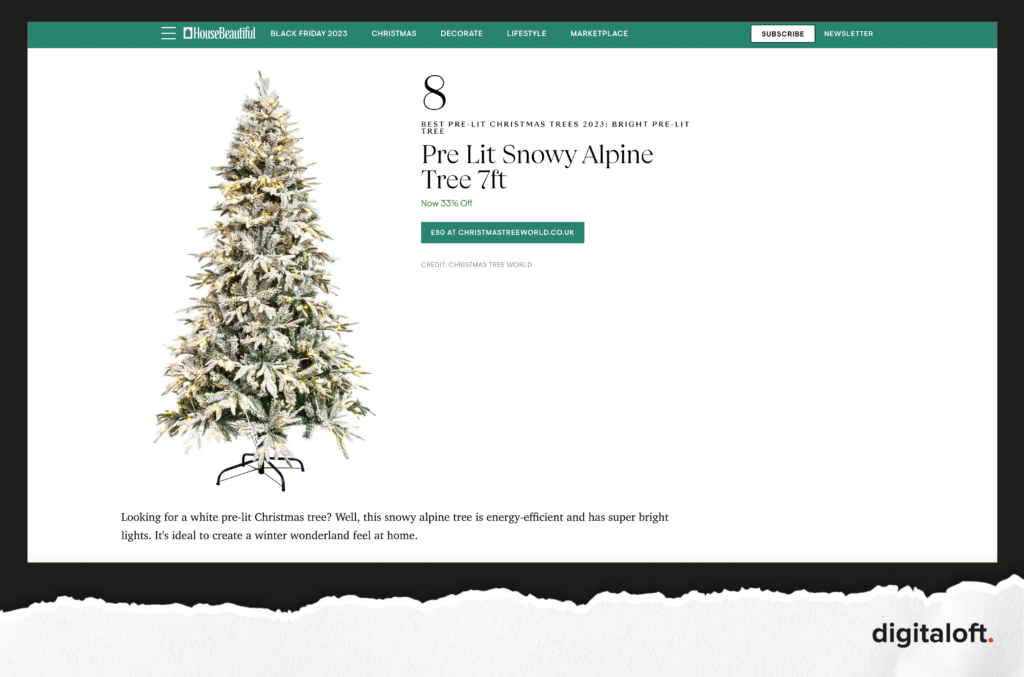
And by pitching out content that already exists, you’re leveraging assets that already exist and making them work harder.
But its links earned straight into individual pieces of content that help to build E-E-A-T here. When other sites are linking to your content, in turn citing it as a source or a recommendation, they’re doing so because they consider it to be authoritative and worth sending their traffic away from their own site to.
Digital PR for Demonstrating E-E-A-T at the Author Level
Demonstrating E-E-A-T at the author level is all about building the reputation of your authors, and from an off-site perspective, digital PR lends itself to this perfectly.
And by leveraging your subject matter experts (the ones who are hopefully authoring your site’s content, too), you’re able to see them featured in relevant press publications alongside giving their insights, comments and top tips on their primary topics of expertise.
From an E-E-A-T perspective, press coverage for your authors is perhaps one of the strongest signals you can build. Or should I say, earn.
Here’s a look at digital PR tactics that you can use at the author level.
Proactively and reactively pitching out expert insights from your subject matter experts
Leveraging the expertise and experience of your brand’s subject matter experts as a way to get them featured in the press is one of the best ways you can demonstrate E-E-A-T at the author level.
And this is something you should be doing both proactively and reactively.
Proactively, you should be having regular catch-ups with the subject matter experts you’re using to get their take on the hot topics in their industry at the moment. Whether that’s seasonal or evergreen top tips, common questions they’re being asked by customers and clients, or their general thoughts on what’s coming in the niche.
By getting your subject matter expert’s take on what your audience needs to know about, you can turn this into proactive pitches; taking their tips and insights and sharing these with relevant journalists.
Being proactive is all about pitching out things you think would be valuable to a publication’s audience and justifying this. It’s all about the value your experts add, and as a PR, it’s your job to sell this to journalists.
Here’s an example of coverage we landed for ADT, our home security client, through proactively pitching out their expert’s insights around protecting your home (no, it doesn’t attribute the tip to the client’s subject matter expert, frustratingly. But we can’t win them al, right?):
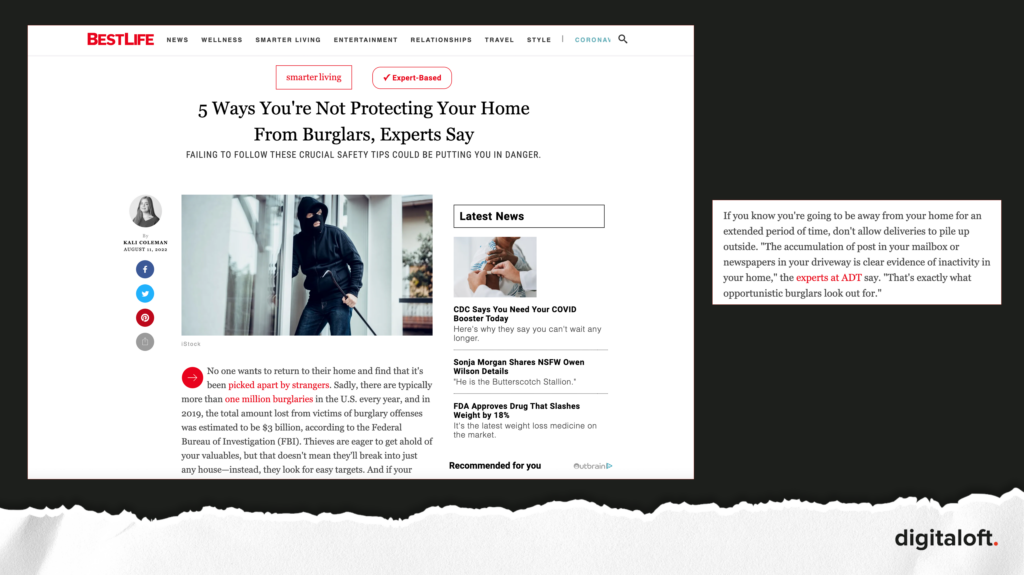
Reactively, you should be monitoring the news in the industries you’re working in and having your subject matter experts add value to trending topics through their opinions, insight and comments.
Reactive PR, or newsjacking as it’s often called, is a skill. You need to know what to react to and what not to react to.
But when you get it right, it’s the perfect way to get your brand in the thick of trending topics in your industry.
Again, just make sure you’re adding real value here. Opinions work well, as do comments that go deeper into a topic that’s trending. But also consider the speed at which you’re pitching out. You need to be fast for this to work. Often very fast.
Here’s another example of coverage we landed for NowPatient, by having the brand’s Pharmacist put together insight and answers to potential questions off the back of breaking news that the NHS is facing a severe shortage to common drugs.
In situations like this, comments from specialists (in this case, a pharmacist) add real value to a journalist’s story; answering questions readers may have, and helping them to understand what’s going on.
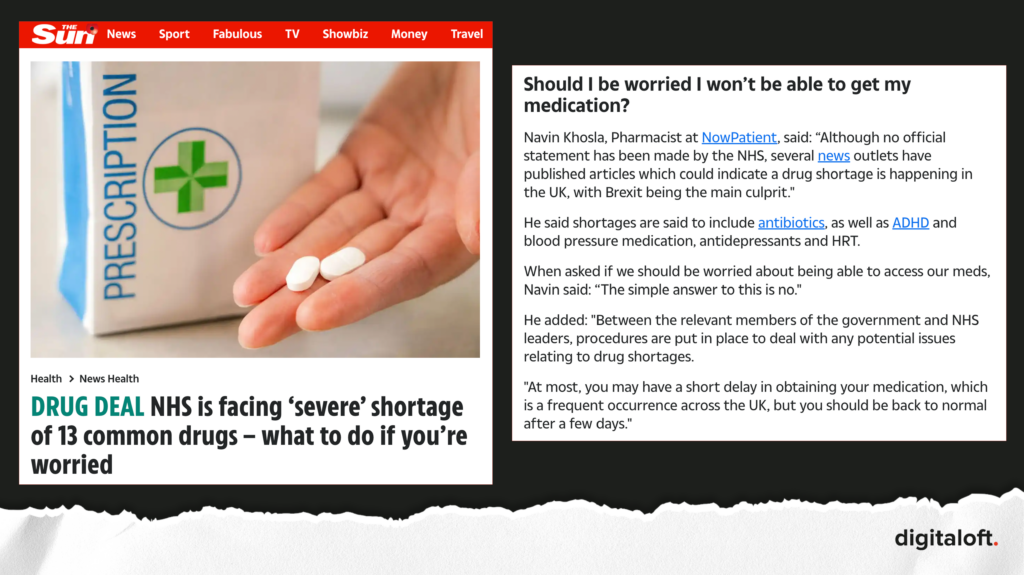
Don’t forget planned reactive, too, which is when you know there’s an opportunity coming up that you can react to (Christmas, for example). This is generally easier to work with, as you’ve much longer lead times.
Here’s an example of planned reactive we used to secure for our client BOXT, off the back of knowing that each year, journalists publish guides around the best time of the year to turn on your heating, according to the experts.
Knowing this was coming, we pitched in insights and recommendations on this from BOXT’s founder.
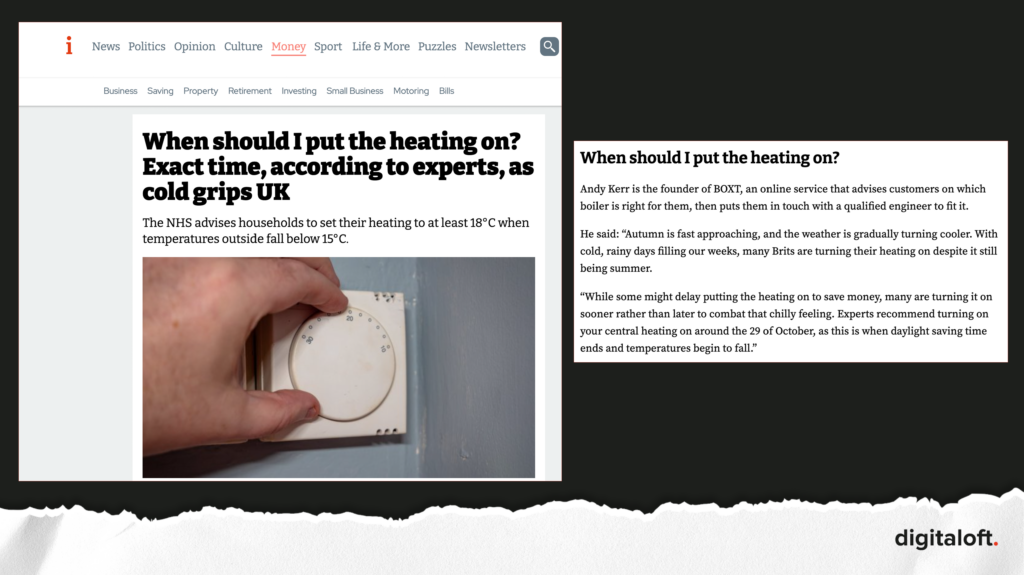
Linking to author profile pages in your pitches to earn links to these
Links from other sites, especially authoritative press publications, pointing to your author’s profile page is a strong signal that they’re trusted by others. And that’s exactly what one of the key elements of demonstrating E-E-A-T at the author level is.
A great way to get publications to link to your author’s profile page is to simply include this in your pitch.
When you’re attributing a quote to your expert in your email pitch, link their name to their profile page. Some will copy and paste their name straight from the email, link included (just make sure you’re not sending with tracking links turned on, otherwise you’ll find that links to these pages go via this tracking link if a journalist just copies and pastes straight off.
If you’re not already doing this, it’s a tactic you can roll out from your next pitch and expect to see at least some success from.
This is another case where you don’t need hundreds of links to your author’s profile pages to demonstrate that they’re a trusted source for journalists and the publications they write for. Often, a handful is enough to build strong signals.
Becoming a source that journalists rely on time and time again
Some say that relationships don’t matter in PR anymore, but that’s not strictly true.
Whilst the days of wining and dining journalists to build an offline relationship may be pretty much behind us, one thing that hasn’t is being a reliable source that can be trusted time and time to offer valuable comments and insights from your experts.
When a journalist knows that they’ll get insightful comments from you as a PR (working on behalf of subject matter experts), and that you’ll deliver this in a timely manner, they’ll come back to you time and time again.
Why?
Because it’s like with many things; when we find something that works, we come back to it whenever it’s needed.
Remember that journalists are busy people, usually working on multiple articles at a time. And that by simply doing what you say you’ll do, when you say you’ll do it (great comments, fast), you’ll become that trusted source.
But make sure what you’re pitching out actually adds value.
I’ve seen too many examples shared recently of comments or tips pitched out that have clearly not been written by an expert, rather they’re nothing more than a reworking of what ranks at the top of Google. In other words, written by a marketer who has little, or no, subject matter expertise, rather than the expert.
Be the marketers whose experts’ comments stand out against a sea of regurgitated responses, and remember that by adding actual value, this is demonstrating first-hand experience… the first E in E-E-A-T.
Digital PR for Demonstrating E-E-A-T at the Brand Level
Demonstrating E-E-A-T at the brand level is all about building the reputation of your brand, and, like with author-level signals, digital PR is perhaps one of the most effective ways to do this. Especially considering that it provides you with an opportunity to get relevant publications talking about your brand, and linking to you.
Here’s a look at digital PR tactics that you can use at the brand level.
Proactively and reactively pitching out expert insights from your subject matter experts
Just as pitching out expert insights from your subject matter experts is a great way to demonstrate E-E-A-T at the author level, this is also an effective way to do the same at the brand level.
You see, in most cases, your experts will be quoted alongside your brand. And this is a win-win situation when it comes to building strong E-E-A-T signals.
Loop back above to the tips for this under the ‘Digital PR for Demonstrating E-E-A-T at the Author Level’ section to leverage this tactic.
Pitching out brand announcements to industry & local publications
It’s easy to overlook both local (to your business, not necessarily in the sense of regional publications) and industry press, the latter especially so if you’re a B2C brand.
But these are opportunities that are perfect for building E-E-A-T signals at the brand level.
Especially if you serve customers and clients nationally or even internationally, if can be easy to focus you PR efforts away from your local area’s publications and focus on those with a much larger reach. But brand PR at a local level is not only pretty easy to land (local publications love to shout about local success stories) coverage, it’s also a great way to earn coverage that’s shouting pretty much exclusively about your brand.
Does a national want to write a story about how your company doubled turnover in a year and made an extra 10 hires? Not a chance (at least not usually; there are always exceptions in PR, for example, real-life case studies are what spring to mind here). But would your local newspaper (online and in print) love to run this? Absolutely.
Here’s an example of coverage that we earned for our client GO Outdoors‘ store reopening in a local publication.

Unlike expert insights and campaigns where you’re adding value to stories via comments and tips, this type of coverage is a story pretty much exclusively about your brand.
Talk about strong E-E-A-T signals; publications shouting about you and nothing but you.
The same concept applies to industry publications.
You might not land clients directly from industry coverage if you’re a B2C brand, but there’s so much value in having authoritative sources within your own sector publish stories about your news. Again, talk about strong E-E-A-T signals, profiling you as a leading brand in your space.
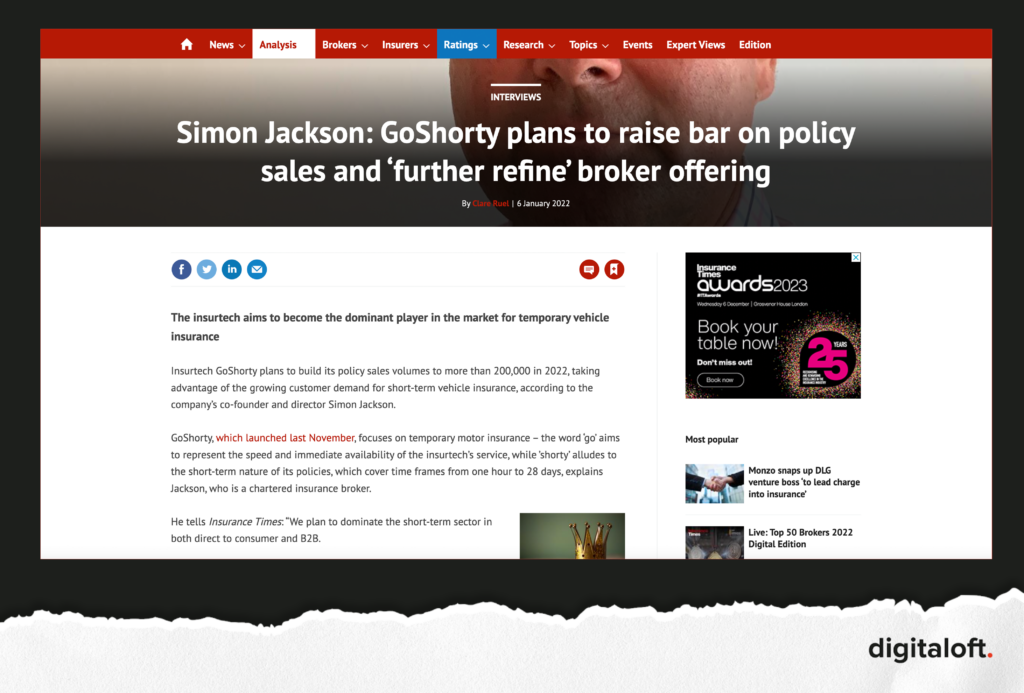
Specialist industry publications and local ones alike need news.
Step away from the tactics you’re used to using (campaigns and thought leadership) and get a little more traditional for a bit, but execute this in a way that you can land primarily online coverage (and links).
You’ll need to be far more targeted, but it’s almost guaranteed that your success rate will be a lot higher.
Campaigns that position you as an industry voice
The industry definitely feels to be producing fewer ‘hero campaigns’ than before, what with a turn to thought leadership and expert insights becoming a great way to build the reputation of both people and brands.
But that doesn’t mean campaigns don’t have their place in your strategy. They very much do.
Data-driven campaigns, especially, provide you with an opportunity to position yourself as an industry voice, increase your reach and provide (usually) top-of-the-funnel commentary on your key topics of relevance through reports, studies and more.
Campaigns can, and should, be relevant to your core offering, but are usually going to be a little wider removed than thought leadership.
Take, for example, The Worldwide Expat Index that we launched for William Russell.

Our client is an expat insurance provider, and their target audience is expats.
Whilst a lot of their thought leadership and expert insights PR work is based very much around topics closer aligned to the insurance side of things, we wanted to launch a campaign that got their audience, expats, talking.
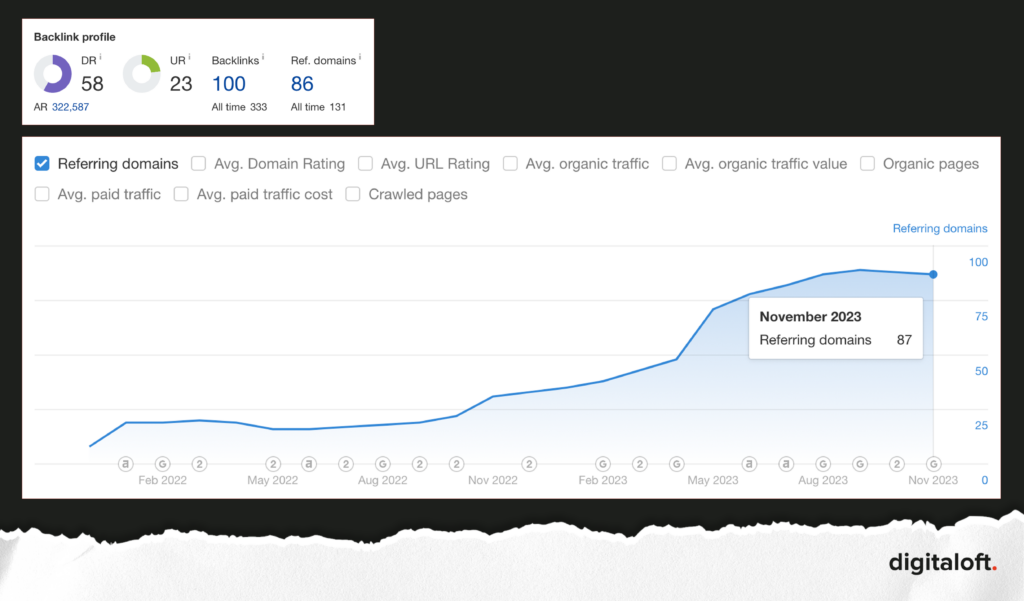
Another great example of this is our campaign, The Cosmetify Index.

This campaign was first launched when the brand, a new startup, wanted to make some noise amongst beauty and lifestyle press.
A data-driven ranking of the world’s hottest beauty brands, products and startups, The Cosmetify Index got the press talking, and audiences sharing, their insights into which people are loving right now. Essentially, commanding the narrative around popular products in the press.
Campaigns help to demonstrate E-E-A-T signals as a result of earning higher volumes of coverage than other tactics, due to multiple stories in each, earning authority links and, ultimately, increasing awareness of your brand around your wider topics.
Using earned coverage for an ‘in the press’ page and ‘as featured in’ section
As I’ve previously mentioned, the concept of E-E-A-T is very much based upon corroborating what you say on your own site with what third parties are saying about you.
And something you should be doing to leverage the coverage you earn is publishing an ‘In the Press’ page on your site that contains either an up-to-date list of all of your brand’s press coverage or highlights of some of the more standout pieces.
This is a great way to shout about the coverage you’ve earned, proudly showcasing it to your users, as well as creating a really easy way for Google to understand the connection between your site and the coverage.
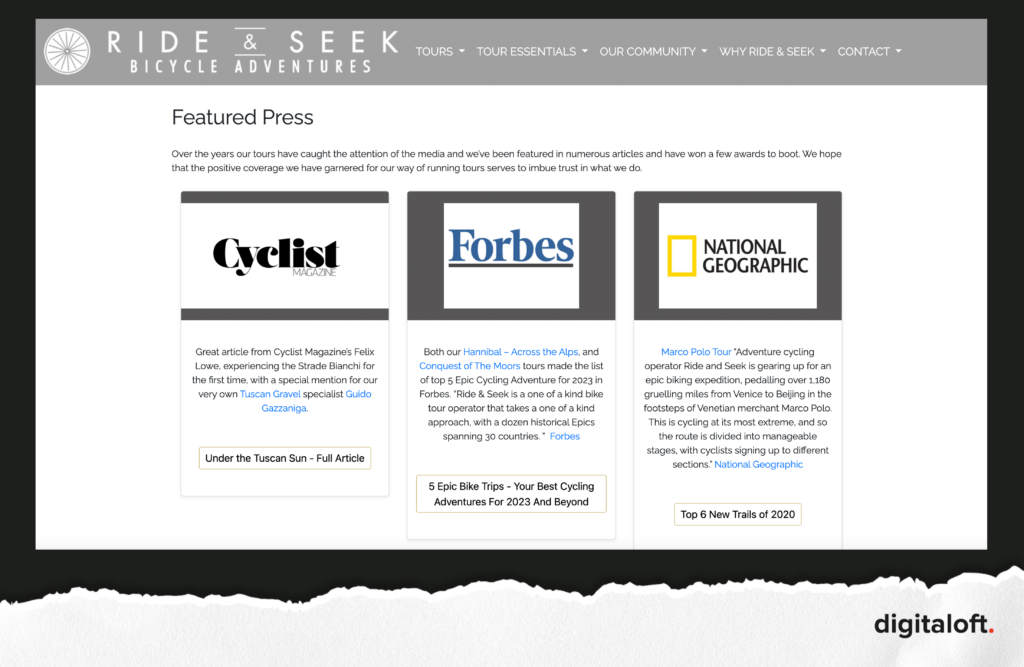
But that’s not all. Consider adding an ‘As featured in…’ section to your site’s homepage and/or about us page. All this needs is a series of standout logos of publications you’ve been featured in, and this is a great way to build trust with your users.
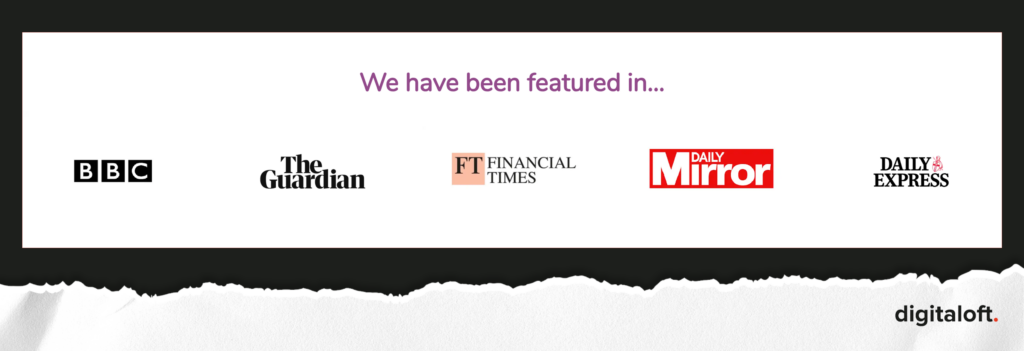
Digital PR for Demonstrating Experience, Expertise, Authoritativeness & Trustworthiness
But alongside looking at how digital PR can be used to demonstrate E-E-A-T at each of the content, let’s take a quick look at how it contributes to signals across each of the four factors.
Digital PR for Demonstrating Experience
Here’s how Google’s Quality Rater Guidelines define experience:
Consider the extent to which the content creator has the necessary first-hand or life experience for the topic. Many types of pages are trustworthy and achieve their purpose well when created by people with a wealth of personal experience. For example, which would you trust: a product review from someone who has personally used the product or a “review” by someone who has not?
How can digital PR help to demonstrate experience?
- Thought leadership is the perfect opportunity for authors to demonstrate that they’re experienced in the topic. This also applies to podcasts, webinars and other content formats you may be able to land appearances on.
- Inclusion within roundups or reviews is a great third-party validation from people who have experienced your product or service.
- Real-life case studies, something that journalists are increasingly asking for, are a great way to showcase how your products or services are helping people, and that they’ve experienced these.
Digital PR for Demonstrating Expertise
Here’s how Google’s Quality Rater Guidelines define expertise:
Consider the extent to which the content creator has the necessary knowledge or skill for the topic. Different topics require different levels and types of expertise to be trustworthy. For example, which would you trust: home electrical rewiring advice from a skilled electrician or from an antique homes enthusiast who has no knowledge of electrical wiring?
How can digital PR help to demonstrate expertise?
- In the same way as it can demonstrate experience, thought leadership also clearly demonstrates the expertise of your subject matter experts.
- Earning coverage and links that are tightly aligned to your brand offering from a topic perspective help to associate you with these areas of expertise.
- If your authors are being featured in top-tier and niche relevant publications as thought leaders, and their profile pages are being linked to (sometimes), this is third-party validation that they’re experts in their field.
Digital PR for Demonstrating Authoritativeness
Here’s how Google’s Quality Rater Guidelines define authoritativeness:
Consider the extent to which the content creator or the website is known as a go-to source for the topic. While most topics do not have one official, Authoritative website or content creator, when they do, that website or content creator is often among the most reliable and trustworthy sources. For example, a local business profile page on social media may be the authoritative and trusted source for what is on sale now. The official government page for getting a passport is the unique, official, and authoritative source for passport renewal
How can digital PR help to demonstrate authoritativeness?
- Earned links and mentions from the press are one of the most effective ways to demonstrate your authority. If the press consistently features your brand and cites your experts, it’s a strong signal that you’re an authority.
- If trusted publications are linking to you, they’re effectively giving you their vote of confidence.
- Features in key publications, in turn, can contribute to increased brand awareness, brand searches and a higher-than-average organic CTR.
- Campaign activity can result in your brand commanding a narrative in your industry through talking-point content that relies on stories that get people talking and sharing.
Digital PR for Demonstrating Trustworthiness
Here’s how Google’s Quality Rater Guidelines define trustworthiness:
Consider the extent to which the page is accurate, honest, safe, and reliable.
The type and amount of Trust needed depends on the page, for example:
Online stores need secure online payment systems and reliable customer service.
Product reviews should be honest and written to help others make informed purchasing decisions (rather than solely to sell the product).
Informational pages on clear YMYL topics must be accurate to prevent harm to people and society.
How can digital PR help to demonstrate trustworthiness?
- Just as press coverage can demonstrate that you’re seen as an authority in your space, it also sends huge trust signals if you’re consistently being featured by other trusted publications.
- But this coverage also gives you the ability to use publication logos on an ‘as featured in…’ section or ‘in the press’ page on your site, further helping your own users to trust you.
Trust goes way beyond digital PR, but earned links and coverage are a huge contributor towards building very high E-E-A-T signals. Let’s not forget that links were first used by Google to determine votes of trust between one site and another, and that hasn’t disappeared.
E-E-A-T & Digital PR: Building the Reputation of Your Content, Authors & Brand
Digital PR plays a much bigger role in demonstrating E-E-A-T than you probably think.
It’s where I started this guide, and it’s where I’ll end.
If you’re not leveraging digital PR to build signals that help both users and search engines to, above everything else, trust your content, authors and brand, then you’re missing an opportunity.
Digital PR isn’t just about links.
And when you understand how it contributes to a holistic organic strategy, of which E-E-A-T is now a big part of, it becomes easier to see why it’s so important to double down on this and to go to whatever length it takes to set your industry’s gold standard.



